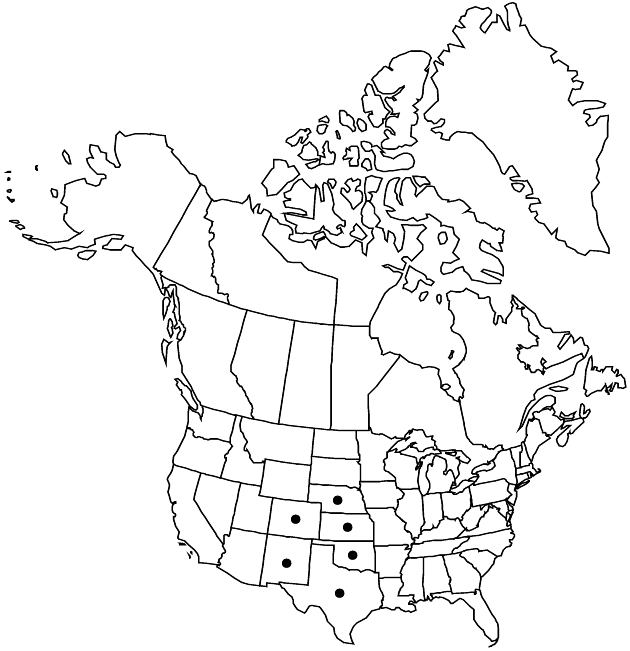Symphyotrichum fendleri
Phytologia 77: 282. 1995.
Perennials, 6–30 cm, cespitose; with thick, woody, branched caudices. Stems 1–10+, decumbent to ascending or erect (grayish brown, slender), sparsely strigoso-hispid, ± scabrous. Leaves (dark bright green) firm, much reduced distally, margins entire, apices acute, mucronate, faces usually glabrous, sometimes sparsely strigoso-hispid; basal withering by flowering (new vernal rosettes often present), sessile, blades (1–3-nerved) linear-oblanceolate, 20–40 × 5–30 mm, bases attenuate, margins scabro-ciliate; proximal cauline sometimes persistent, sessile, blades linear to linear-lanceolate, 10–40 × 5–20 mm, bases sometimes subclasping, margins entire, scabrous; distal sessile, blades linear to linear-lanceolate, 20–40 × 2–3 mm, bases cuneate, margins entire, coarsely cililate-spinulose, apices acute, white-spinulose, faces sometimes stipitate-glandular. Heads in ± narrowly racemiform to paniculiform arrays, branches sometimes initially patent, then spreading to ascending. Peduncles sparsely hispido-strigose, ± densely stipitate-glandular, bracts ± ascending, linear to lance-oblong, grading into phyllaries. Involucres campanulate, 4–7 mm. Phyllaries in 3–4 series, lanceolate, unequal, bases ± indurate, margins narrowly to widely scarious, hyaline except apically, sometimes ciliolate, often stipitate-glandular, green zones lanceolate to diamond-shaped, covering distal portion (outer), apices acuminate, spreading to reflexed, faces glabrous, moderately to densely short-stipitate-glandular. Ray-florets 10–20; corollas light to dark lavender to purple, laminae 5–10 × 1–2 mm. Disc-florets (7–) 10–30; corollas yellow becoming reddish purple, 3.5–5 mm, throats narrowly funnelform, lobes narrowly triangular, 0.4–0.7 mm. Cypselae brown (nerves stramineous), obovoid, ± compressed, 1.5–2.5 mm, 7–10-nerved, faces moderately strigillose; pappi cinnamon to sordid, sometimes purplish-tinged, 4.5–5 mm. 2n = 10.
Phenology: Flowering (Aug–)Sep–Oct.
Habitat: Open, sandy, silty, shaly, often rocky soils, eroded limestone or sandstone outcrops, mixed-grass prairies, pastures, roadsides
Elevation: 600–2000 m
Distribution

Colo., Kans., Nebr., N.Mex., Okla., Tex.
Discussion
Symphyotrichum fendleri has been reported from Mexico (Chihuahua) [by C. H. Schultz-Bipontinus (1856) fide G. L. Nesom (pers. comm.)], but its occurrence in Mexico remains to be confirmed.
Selected References
None.